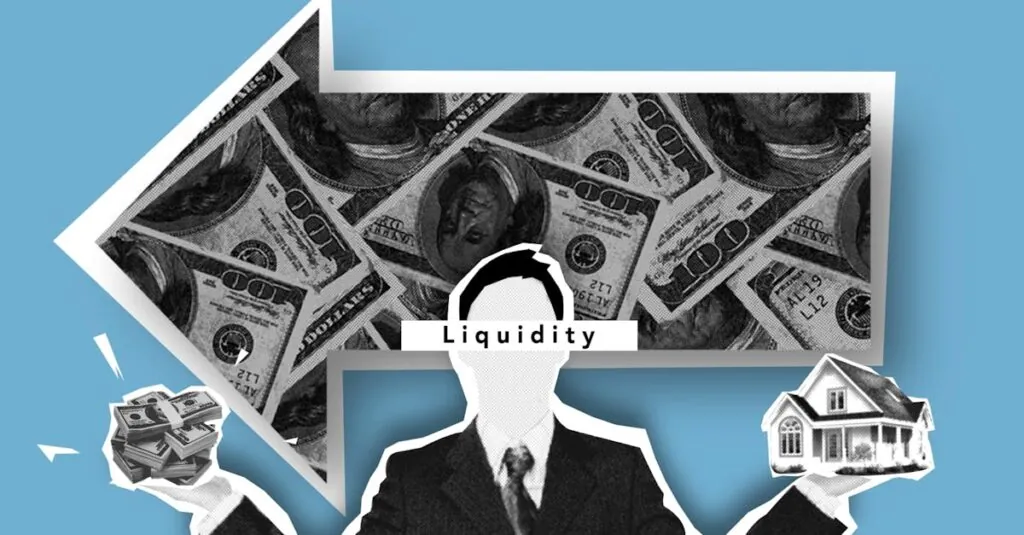Table of Contents
ToggleIn the wild world of homeownership, mortgage forbearance is like a superhero cape, swooping in to save the day when financial storms hit. Imagine having the power to pause those pesky mortgage payments while you catch your breath—sounds dreamy, right? With the pandemic shaking things up, many homeowners found themselves in a tight spot, and mortgage forbearance became the lifeline they didn’t know they needed.
Overview Of Mortgage Forbearance Policy
Mortgage forbearance allows homeowners to temporarily suspend mortgage payments. This policy serves as a safety net for those encountering financial hardship. It offers relief, especially during challenging times like economic downturns or public health crises. Homeowners may request forbearance through their lenders, who typically evaluate their financial situations.
Eligibility criteria for mortgage forbearance vary among lenders. For instance, some lenders require proof of income loss, while others may consider the borrower’s overall financial health. Most plans provide a specific period during which payments are paused, often lasting from three to twelve months.
During forbearance, homeowners remain responsible for the total amount owed. Upon resuming regular payments, they may face options to catch up on missed payments. These options can include extending the loan term or negotiating a repayment plan with their lender.
Homeowners must stay informed about the terms and conditions of their specific forbearance agreements. Regular communication with lenders ensures clarity and helps prevent confusion about payment obligations. After forbearance ends, borrowers should continue managing their finances prudently to maintain homeownership stability.
This policy is crucial for easing financial stress, allowing families to navigate difficult periods without losing their homes.
Key Features Of Mortgage Forbearance
Mortgage forbearance provides essential relief for struggling homeowners by allowing them to pause their mortgage payments temporarily. Key features include specific eligibility criteria and defined durations for repayment relief.
Eligibility Criteria
Eligibility for mortgage forbearance depends on various factors determined by individual lenders. Some lenders request documentation of income loss, while others assess overall financial situations. Forbearance options may also be influenced by loan types, such as FHA or VA loans, which have distinct guidelines. Homeowners currently facing hardships due to job loss or reduced hours often qualify more easily. Meeting lender requirements plays a crucial role in gaining access to these benefits and allows borrowers a pathway to financial recovery.
Duration Of Forbearance
The duration of mortgage forbearance typically ranges from three to twelve months, though this may vary based on lender policies. Borrowers generally can negotiate the length of the forbearance period, guided by their financial needs. Notably, some lenders offer extensions, particularly during extended economic crises. Throughout the forbearance term, homeowners maintain responsibility for the total loan amount owed. Effective communication with lenders helps clarify arrangements and ensure that borrowers fully understand their obligations when the forbearance period ends.
Impact Of Mortgage Forbearance Policy
Mortgage forbearance significantly influences both borrowers and lenders during financial crises. It provides essential support to homeowners while posing challenges to lending institutions.
Effects On Borrowers
Borrowers benefit from mortgage forbearance through temporary relief from monthly payments. Homeowners often find it easier to manage other expenses without the burden of their mortgage obligation. The policy allows individuals to maintain their residences during tough times. Many mortgage borrowers regain financial stability and eventually catch up on missed payments. Keeping open communication with lenders ensures borrowers clearly understand future obligations and repayment plans.
Effects On Lenders
Lenders experience various outcomes due to mortgage forbearance policy implementation. Financial institutions face short-term changes in cash flow resulting from paused payments. Managing these adjustments requires careful planning to avoid significant losses. Many lenders implement strategic measures to support borrowers while addressing potential risk. Lenders often work to ensure that forbearance agreements are well-structured to minimize complications during the repayment phase. Collaborating with borrowers improves relationships and fosters long-term loyalty.
Federal And State Regulations
Federal and state regulations play a vital role in shaping mortgage forbearance policies. Understanding these legal frameworks helps borrowers navigate their financial options effectively.
CARES Act Provisions
The CARES Act introduced significant protections for homeowners during the COVID-19 pandemic. It allowed borrowers with federally backed loans to request up to 12 months of forbearance without penalties. Homeowners only needed to state a financial hardship related to the pandemic to access these benefits. The act also mandated that lenders offer clear information about repayment options following the forbearance period. Enhanced communication kept borrowers informed of their rights and responsibilities throughout the process.
State-Specific Measures
Many states implemented additional measures to support homeowners facing financial struggles. Regulations varied across states, addressing specific local economic challenges and protecting residents. Some states extended the duration of forbearance beyond federal guidelines, providing an average of up to 18 months in certain circumstances. States also established moratoriums on foreclosures, ensuring homeowners could not lose their properties during the crisis. These combined efforts created a safety net for many, helping them to maintain housing stability amid uncertainties.
Pros And Cons Of Mortgage Forbearance Policy
Mortgage forbearance offers both advantages and disadvantages for homeowners. Temporary relief from monthly payments stands out as a significant benefit, allowing borrowers to manage immediate expenses. Financial stability often improves after a few months of forbearance, helping individuals regain control over their finances.
The flexibility in negotiating the forbearance period provides homeowners with the chance to customize their arrangements based on unique financial situations. During this period, the absence of penalties for missed payments proves beneficial for many families. For those facing economic hardships, such as job loss, the policy represents a safety net against potential foreclosure.
On the flip side, deferred payments during forbearance may lead to a larger financial burden later. Homeowners typically owe the total amount missed at the end of the forbearance period. Understanding the terms of repayment is crucial; some lenders may require a lump sum payment, which can strain finances.
Additionally, reliance on forbearance can impact credit scores if lenders fail to report the arrangement accurately. Homeowners might experience limited housing options in the future due to this potential negative effect on creditworthiness. Awareness of state and federal regulations governing forbearance is essential as these rules can vary significantly, affecting eligibility and terms.
Lenders also face challenges due to disrupted cash flow from paused payments. Strategic planning becomes critical to avoid losses while still supporting borrowers. Clear communication between borrowers and lenders helps in minimizing confusion and maintaining trust during these transitional periods.
Mortgage forbearance serves as a vital resource for homeowners grappling with financial hardships. It provides a temporary reprieve from mortgage payments, allowing individuals to stabilize their finances during challenging times. While it offers significant benefits, understanding the terms and potential long-term implications is essential for borrowers.
Maintaining open communication with lenders is crucial to navigate the complexities of repayment plans effectively. As regulations continue to evolve, staying informed about available options and protections can empower homeowners to make informed decisions. Ultimately, mortgage forbearance can be a lifeline, helping families maintain housing stability while they work towards recovery.







